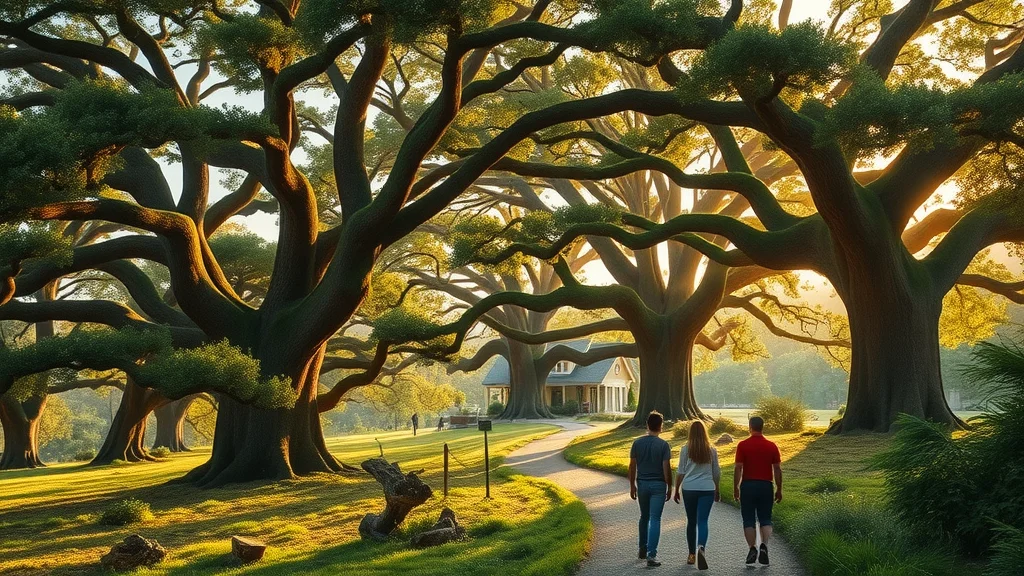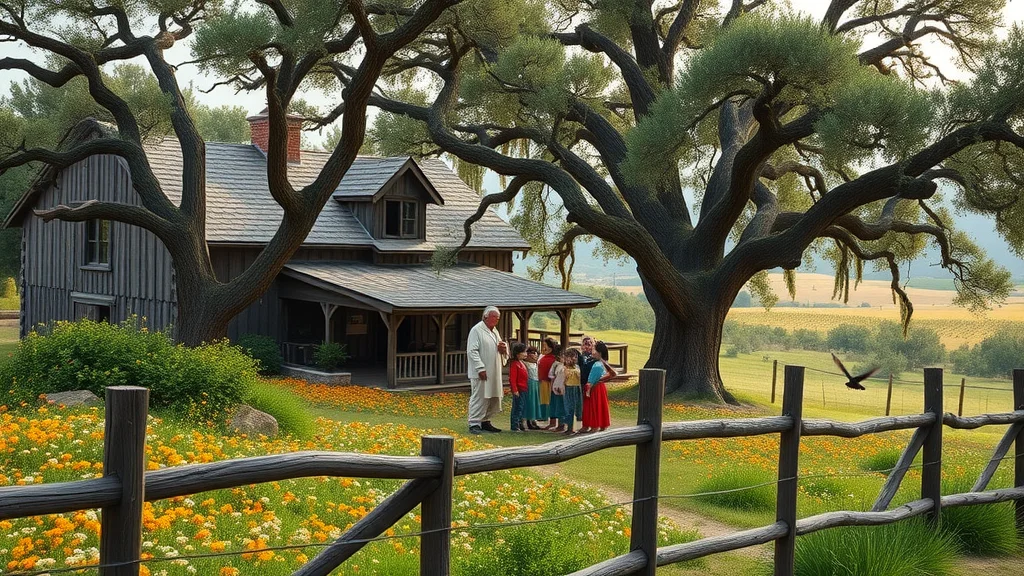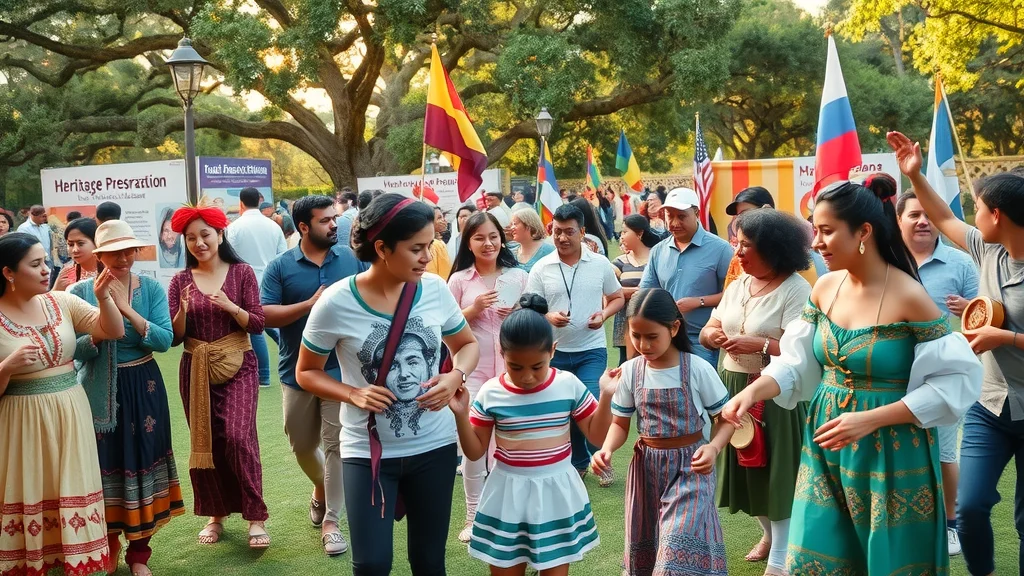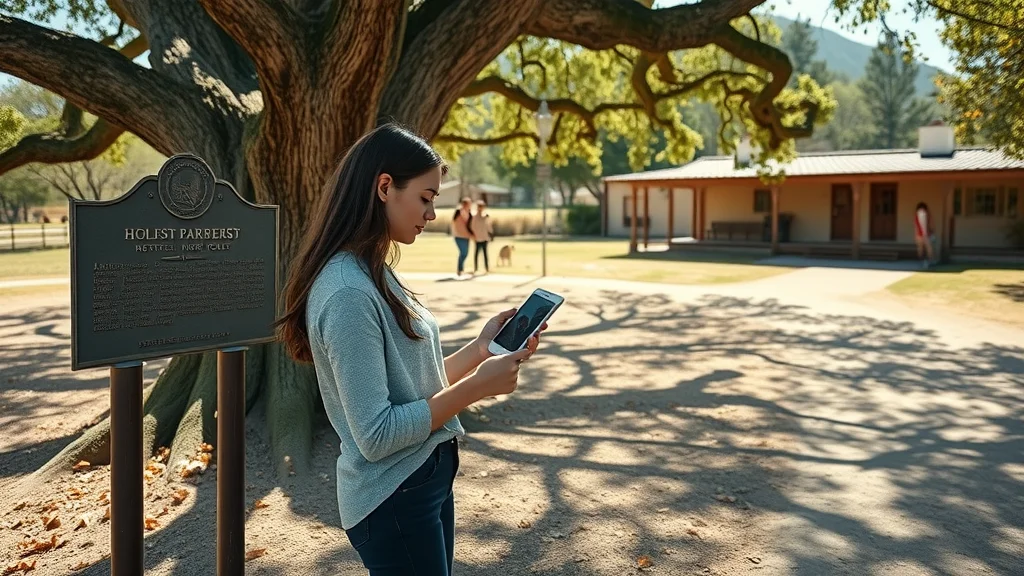Preserving Our Past: Why Cultural Heritage Preservation Matters Now More Than Ever
Imagine walking through an ancient grove of oak trees, their branches arching overhead like a living cathedral, or exploring a historic ranch house that has watched centuries unfold. What stories would these places tell if they could speak? Across California and the world, sites of profound cultural and historical significance are under threat every day—from urban development, environmental changes, and the erosion of collective memory. Cultural heritage preservation is not only about saving old buildings or treasured artifacts; it is about maintaining a living connection to history, to community identity, and to the wisdom of generations past. In a rapidly changing world, understanding and safeguarding these resources is more crucial than ever to ensure that future generations inherit not just land, but a vibrant tapestry of shared experience and meaning.
Cultural heritage preservation enters the spotlight precisely because it stands at the crossroads of education, inspiration, and sustainable stewardship. Every time a historic site is lost or a cultural tradition fades away, an irreplaceable part of our shared story disappears. Today, with advances in technology and greater awareness of cultural diversity, preserving heritage is no longer just the work of museums and scholars—it is a necessity for everyone. By delving into the value and practice of cultural heritage preservation, we discover how these efforts protect our environment, strengthen community bonds, and unlock educational and creative opportunities for all. This journey into preservation is not merely academic—it's a call to action for anyone who treasures the richness of human history and its lessons for the future.

Beyond Old Buildings: What Cultural Heritage Preservation Truly Means
Cultural heritage preservation, at its core, is the active protection, management, and celebration of the places, stories, and natural wonders that define a community’s unique identity. It encompasses everything from historic ranches, ancestral lands, and sacred sites, to languages, festivals, and even the living traditions that people carry forward each day. Effective preservation ensures that these tangible and intangible legacies are not only guarded against loss, but are made accessible and meaningful to present and future generations. In California, an effort as broad and inclusive as the one undertaken by parks and communities goes beyond preserving static landmarks—it's about continuously re-examining history, supporting culture bearers, and fostering public education that invites everyone to participate.
For communities unfamiliar with the full scope of heritage preservation, there is real risk in underestimating its impact. Without proactive protection, climate change, wildfires, and unchecked development can erase centuries in a matter of years. When traditional narratives or historic locations are overlooked, marginalized voices can remain unheard, and deeper understanding of shared history may never come to light. By exploring what it truly means to preserve cultural heritage, we unlock not only memories of the past, but also a sense of stewardship and belonging that shapes resilient, inspired communities for tomorrow.

How Cultural Heritage Preservation Connects Communities and Inspires Action
As a living laboratory of California history, Anderson Marsh State Historic Park stands as a testament to the power of cultural heritage preservation. Its mission—aligned with broader state priorities—is to provide health, inspiration, and education by safeguarding both natural and cultural resources. Preserving heritage at sites like Anderson Marsh enriches lives by inviting people of all backgrounds to experience ancient oak woodlands, historical ranches, and sacred landscapes that nurture community identity and curiosity. Every walking trail and restored structure is a direct invitation to connect with the land’s layered history, making it possible for visitors and locals to encounter stories that would otherwise remain untold.
The practice of cultural heritage preservation does far more than protect physical spaces. When parks create accessible trails, interpretive programs, and opportunities to honor diverse cultures—like celebrating Latino Heritage Month or highlighting Indigenous contributions—they foster an environment where everyone can be both teacher and learner. This inclusive, hands-on approach links past and present, giving visitors an authentic sense of place and purpose. As public spaces embrace heritage preservation, communities grow stronger, more empathetic, and more inspired to safeguard their own legacies for those yet to come.

From Sacred Trails to Living History: The Enduring Relevance of Heritage Sites
Cultural heritage sites are more than educational; they are emotionally evocative spaces that carry deep significance for local peoples and offer healing, reflection, and gratitude. Trails winding through Anderson Marsh, for instance, are described by visitors as both sacred and inviting, serving as places where gratitude is given—not just for beauty, but for the enduring stories they represent. These lands invite personal connections that are unique to each walker, bridging natural wonders with centuries-old traditions. For many, the preservation of sacred sites is an act of thanksgiving and respect, fueling resilience within the broader community.
Heritage sites also function as catalysts for learning. By experiencing a well-maintained historic ranch or witnessing centuries-old oak groves, visitors become part of an ongoing story. Parks use these experiences to inspire a spirit of stewardship, so that giving back to the land—or to history itself—becomes a valued community practice. In this way, cultural heritage preservation becomes the work of many hands and voices, uniting a diverse society under the banner of legacy and care.
Reimagining Access: Technology and Creativity in Modern Preservation
The landscape of cultural heritage preservation is evolving, powered by digital innovation and a commitment to accessibility. Today’s parks systems are leveraging technology—such as mobile tools and virtual reality apps—to broaden the reach of heritage sites. A visitor can now experience the wonders of Anderson Marsh and other state parks from home, connecting with sites virtually and gaining educational insights that enhance appreciation and awareness. These advances do not replace the need to visit in person, but they inspire a new generation to become involved and informed about preservation efforts and their importance.

Creativity also plays a vital role. Public initiatives—like photo contests that celebrate California’s statehood or special programs supporting artists and storytellers in the parks—encourage communities to reimagine what heritage means. By supporting artists, educators, and local culture bearers, preservation shifts from static display to dynamic, participatory experience. The result is an ever-expanding circle of engagement, where heritage is not just observed but lived, shared, and continually reinterpreted for all.
Weathering Change: Resilience, Stewardship, and the Future of Our Heritage
Preserving cultural heritage is not without its challenges. Wildfires, drought, and the effects of climate change are reshaping California’s landscape, demanding both innovative and resilient approaches. Rather than retreat in the face of these threats, forward-thinking parks and preservationists are prioritizing sustainability—adapting management practices, restoring natural features, and planning for the unexpected. This approach ensures that heritage sites can withstand disruption, and that the stories and traditions bound to the land remain intact for future generations.
Efforts to interpret the past responsibly are equally vital. Parks are reexamining interpretive programs to ensure history is presented with nuance and depth, bringing overlooked or marginalized perspectives into focus. By anchoring interpretation in authenticity and context, parks not only preserve historic sites, but also foster a deeper societal reckoning with both the triumphs and complexities of our shared past.
The Philosophy of Inclusive and Inspired Stewardship at Anderson Marsh State Historic Park
Anderson Marsh State Historic Park contributes to the field of cultural heritage preservation by anchoring its values in inclusivity, education, and sustainable stewardship. Its philosophy reflects a broader statewide mission that prioritizes both biological diversity and cultural riches, creating public spaces for learning, healing, and inspiration. Through the protection of valued natural and cultural resources, the park ensures that education is hands-on and relevant, seamlessly blending environmental conservation with engaging visitor experiences.
This approach stands out for its focus on relevance and access—reaching out to California’s growing and diversifying population. Initiatives to expand recreation, incorporate the arts, and engage local communities echo the park’s commitment to making heritage meaningful and accessible to all. Even as the landscape changes—through climate events or evolving societal values—this philosophy of stewardship ensures that heritage preservation remains vibrant, dynamic, and responsive to contemporary needs. At its heart, Anderson Marsh State Historic Park invites every visitor to become a co-creator in the ongoing story of California, nurturing a culture of gratitude and responsibility.
By placing an emphasis on living history, interactive learning, and creative expression, the park’s perspective challenges the notion that heritage is static or exclusive. Instead, it positions preservation as active, inclusive participation—a belief reflected in interpretive programs, public events, and collaborations with artists and community leaders. This unique lens continues to shape how heritage is preserved and shared statewide.
Real Experiences: Visitors Embrace the Spirit of Preservation
Personal encounters with cultural heritage sites often leave a lasting impact, transforming the abstract idea of preservation into deeply felt experience. For many, walking the trails, standing among ancient trees, or exploring historical structures provides a sense of connection and reverence rarely matched elsewhere. The following review from a recent visitor speaks to the profound meaning such sites can hold:
I love the walk, a very sacred site for myself and local peoples. Always give thanks and appreciation. Aho
Moments like this highlight the heart of cultural heritage preservation: gratitude for the past, respect for community traditions, and a shared responsibility to steward these sacred spaces. As more people engage with sites like Anderson Marsh, they discover not just history, but a source of inspiration and pride. By stepping onto these trails or participating in park events, future visitors, too, can embrace the enduring spirit of preservation and contribute to a lasting legacy.
The Lasting Impact of Cultural Heritage Preservation on Our Communities
The commitment to cultural heritage preservation reverberates through every trail, oak grove, and historic building. Efforts rooted in thoughtful stewardship, community engagement, and educational innovation provide a foundation for enduring connection and resilience. As parks and heritage sites adapt to new challenges and audience needs, their work demonstrates that preservation is not a static goal, but a dynamic force that unites the past with a thriving future. By championing inclusive access, creative learning opportunities, and responsible interpretation, organizations like Anderson Marsh State Historic Park set a high standard for all who value our cultural inheritance.
Above all, the value of cultural heritage preservation lies in its capacity to foster belonging, spark curiosity, and safeguard the wisdom and beauty of generations. It is not simply about saving isolated landmarks, but about sustaining vibrant channels of memory, knowledge, and community care. As preservation efforts evolve, so does the hope that every visitor can play a part in keeping history alive and meaningful, for California and beyond.
Contact the Experts at Anderson Marsh State Historic Park
If you’d like to learn more about how cultural heritage preservation could benefit your community, or want to experience the unique blend of history and nature firsthand, contact the team at Anderson Marsh State Historic Park.
📍 Address: 8400 CA-53, Lower Lake, CA 95457, USA
📞 Phone: +1 707-279-2267
🌐 Website: http://www.parks.ca.gov/
Anderson Marsh State Historic Park Location and Availability
🕒 Hours of Operation: For the most current hours, please refer to the official park website or contact the park directly.
🌐 Website: http://www.parks.ca.gov/

 Add Row
Add Row  Add
Add 





Write A Comment